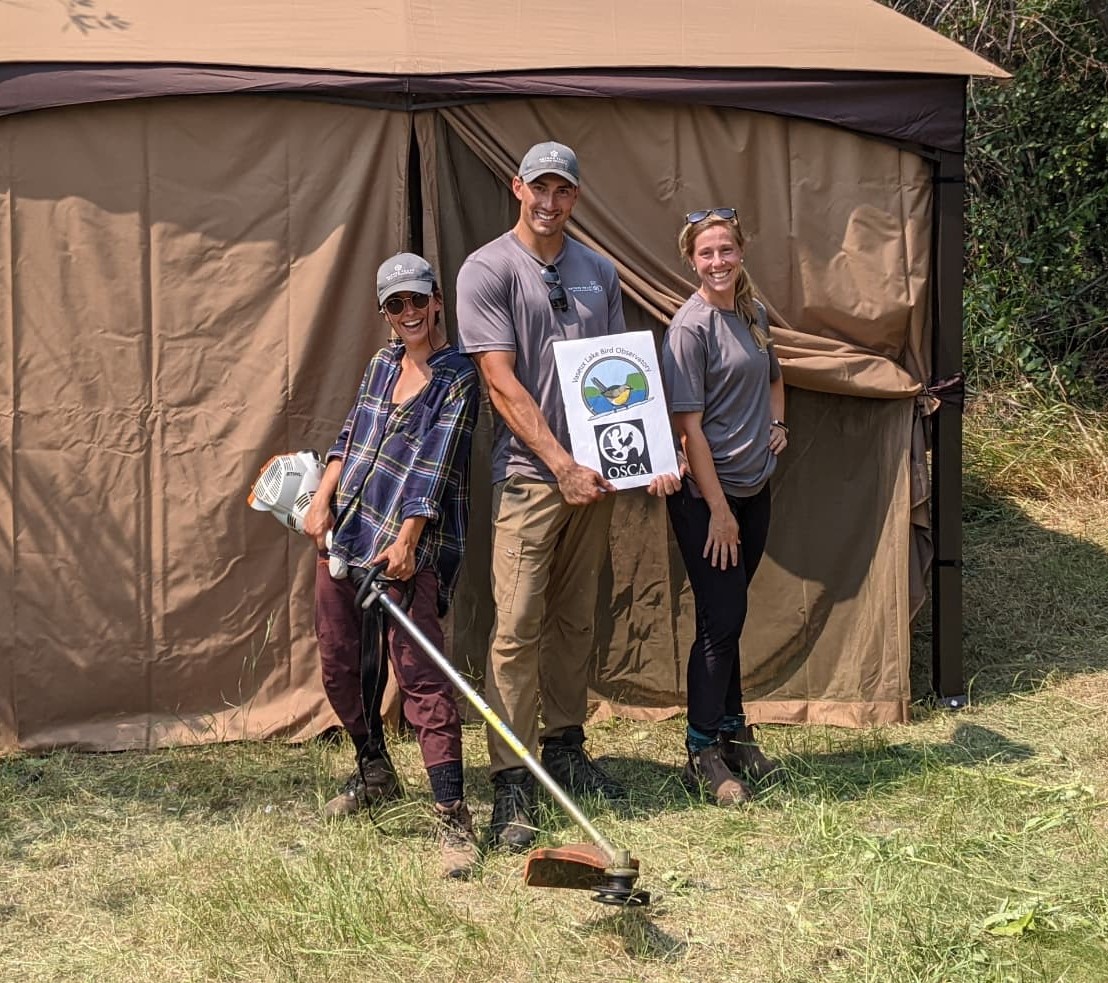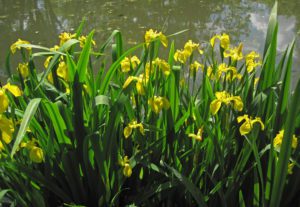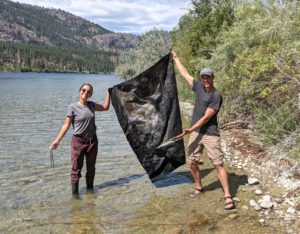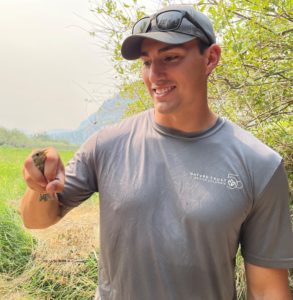
The Okanagan Conservation Field Crew has been hard at work over the last few weeks. From tackling invasive species to helping with important research, this crew has been ensuring our Okanagan properties are thriving.

The removal of invasive Yellow Flag Iris has been a big project for the crew at our Vaseux Lake property in the South Okanagan. Yellow Flag Iris is an invasive flowering plant that easily spreads through ditches, wetlands, streams, lake shorelines, and shallow ponds. It reproduces through seed dispersal with seeds that float, causing them to spread quickly. The seeds can also remain afloat for up to a year – making it possible for them to travel long distances down waterways. Several hundred plants may be connected underwater due to their extensive root systems. These systems can create thick mats which can damage wildlife habitat, reduce water flow, and crowd out native vegetation. It can also alter habitats by widening waterways, compacting soil, and trapping sediments.
 The Yellow Flag Iris also creates a toxic gas, which our crew was actually able to use to their advantage. Last fall the 2020 Okanagan Conservation Field Crew worked Agrowest Consulting Scientists to install benthic barriers over the Yellow Flag Iris plants at Vaseux Lake. These barriers sealed the plants off from their surrounding environment, trapping the toxic gas and eventually they exterminated themselves. This summer, the crew removed the mats from last year and found no living Yellow Flag Iris plants, meaning their efforts were successful!
The Yellow Flag Iris also creates a toxic gas, which our crew was actually able to use to their advantage. Last fall the 2020 Okanagan Conservation Field Crew worked Agrowest Consulting Scientists to install benthic barriers over the Yellow Flag Iris plants at Vaseux Lake. These barriers sealed the plants off from their surrounding environment, trapping the toxic gas and eventually they exterminated themselves. This summer, the crew removed the mats from last year and found no living Yellow Flag Iris plants, meaning their efforts were successful!

The crew also helped out at the Vaseux Lake Bird Observatory (VLBO) banding station. The crew helped out at VLBO by doing some weed whacking and setting up mist nets (thin, nearly invisible nets used to catch birds in an effective, non-harmful way). They were set up in riparian/wetland areas along common flight paths. Experienced extractors get the birds out of the nets, take measurements (weight, wing length, of the species) and then band the birds before releasing them. All this information is categorized and used as part of a worldwide banding project!
The summer might nearly be done, but the Okanagan Conservation Field Crew is still working hard. We look forward to hearing more from them about their important projects!
